
Roots
In the vibrant tapestries of ancestral memory, where every coil whispers tales of sun-kissed lands and resilient spirits, lies a profound understanding of what nourishes hair. For generations, the care of textured coils has been a sacred act, a continuity of identity and well-being. It is a dialogue with the earth, a recognition of the inherent strength within each strand, and a testament to ingenuity born of deep connection to natural surroundings. To truly comprehend how traditional African hair practices bestowed moisture upon coils, one must first listen to the echoes from the source, tracing the lineage of knowledge from elemental biology to the rich heritage of care.
The intricate architecture of coiled hair, a marvel of natural design, presents its own unique thirst. Unlike straighter hair forms, the helical twist and turns of coils mean that natural oils produced by the scalp find a greater challenge traversing the entire length of the hair shaft. This structural reality often renders coiled hair inherently prone to dryness, making sustained moisture a central pillar of its vitality. Ancestral communities, acutely aware of this, developed sophisticated methodologies and utilized botanical riches that worked in harmony with the hair’s very nature.

The Hair’s Intrinsic Design and Ancestral Insights
The cuticle , the outermost protective layer of each hair strand, plays a dominant part in moisture retention. In tightly coiled textures, these cuticle scales can be more open or raised, allowing moisture to enter quickly but also escape with equal haste. This characteristic, often described as high porosity , can result in hair that feels dry and rough.
A 2019 study published in the Journal of Cosmetic Dermatology pointed to high porosity in African American women often stemming from a compromised cuticle layer, leading to 30% more breakage and 40% less moisture retention than hair with normal porosity. Long before scientific journals articulated these realities, African traditions observed and adapted, instinctively seeking ingredients and practices that would smooth this cuticle, seal its embrace, and keep hydration within the hair’s core.
The understanding extended beyond mere observation. It was a lived science, passed through the generations, where the feeling of a strand between fingers, the way it responded to a particular herb, or the collective health of a community’s hair informed the evolution of care. This deep, experiential knowledge established the foundational principles for moisturizing coils, principles that endure as vital wisdom.

Traditional Classifications of Hair and the Language of Care
While modern trichology offers classifications like 3C or 4C, ancestral communities described hair not through numerical systems but through its lived qualities, its cultural significance, and its response to care. Hair might be spoken of in terms of its ability to hold a style, its softness after a butter application, or its luster under the sun. These descriptions, often rooted in specific regional dialects, formed the lexicon of textured hair long before globalized beauty standards sought to categorize. The names given to hairstyles, the tools used, and the very ingredients spoke volumes about a community’s relationship with their hair, their land, and their shared history.
Consider the Yoruba term Irun Kiko , referencing hair threading, a practice noted in Nigeria as early as the 15th century. This linguistic specificity points to a heritage where the act of care and the names of the techniques were deeply intertwined with cultural identity. This rich terminology reveals not just functional descriptions, but also the deep respect afforded to hair as a living extension of self and community.
The foundational understanding of coiled hair’s inherent need for deep, sustained moisture was a core tenet of ancestral African hair care.
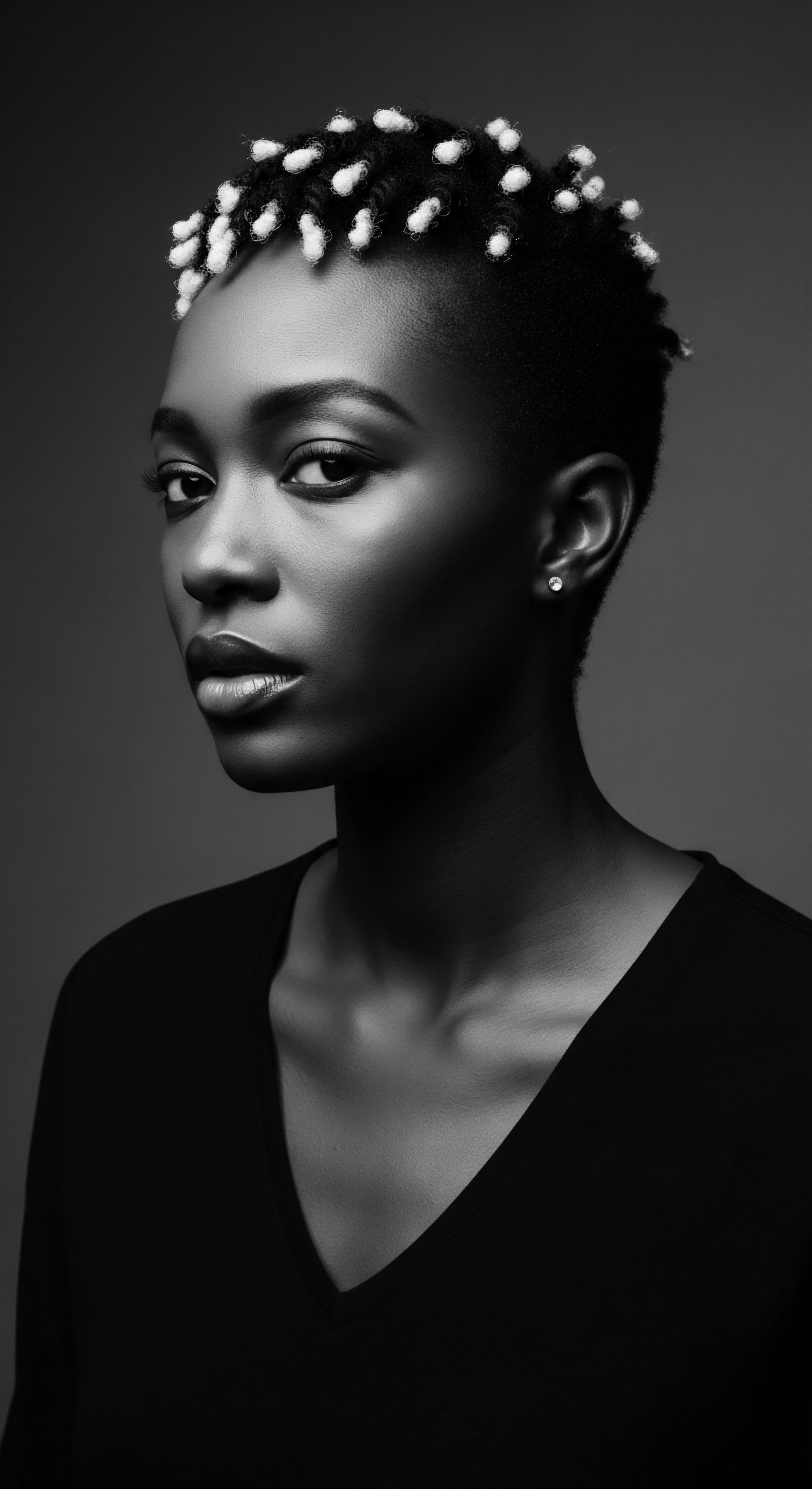
Earth’s Gifts ❉ Elemental Moisturizers from the Source
The continent of Africa, a cradle of life, provided an unparalleled pharmacopoeia for hair care. From the arid Sahel to the lush rainforests, indigenous plants yielded powerful emollients, humectants, and restorative compounds. These were not simply “products” in the modern sense; they were gifts from the earth, harvested with reverence and applied with intention. The selection of these ingredients was guided by centuries of communal experimentation and inherited wisdom.
- Shea Butter (Vitellaria paradoxa) ❉ Cultivated from the nuts of the shea tree, abundant in West Africa, this rich butter has been a moisturizing cornerstone for centuries, valued for its fatty acids and vitamins A, E, and F. Ancient Egyptian queens, including Cleopatra, are said to have used shea oil for skin and hair.
- Baobab Oil (Adansonia digitata) ❉ Pressed from the seeds of the majestic Baobab tree, often called the “Tree of Life,” this oil provides deep hydration and strength with its omega fatty acids and vitamins. It is cherished for its ability to combat frizz and restore hair’s natural sheen.
- Karkar Oil ❉ A traditional blend from Chad and Sudan, often including sesame oil, honey wax, and animal fat, renowned for its ability to lock in moisture and nourish coils. Its components work to form a protective barrier and replenish lost lipids.
These natural butters and oils, along with other elements like clays and specific plant extracts, formed the backbone of moisturizing practices. They were not merely applied; they were massaged in, warmed, mixed, and layered, each step a deliberate act designed to penetrate and seal moisture within the hair’s protective cuticle. This deeply ingrained knowledge of botanical efficacy underscores the profound connection between African heritage and the vibrant health of coiled hair.

Ritual
The journey of moisture for coiled hair in African traditions extended far beyond the simple application of a substance. It was deeply embedded within a rich tapestry of daily routines, communal gatherings, and celebrated rituals. These practices, honed over generations, transformed hair care into an art form, a science of touch, and a conduit for cultural expression.
Each technique, each tool, and each transformation held within it a lineage of shared wisdom, echoing the resilience and creativity of a people. The question of how moisture was imparted naturally finds its answer within these deeply rooted rituals.

What Techniques Protected Coils from Drying?
A central tenet of traditional African hair care, especially for moisturizing coils, rested in the art of protective styling . These styles were not merely aesthetic choices; they served a fundamental purpose ❉ to shield delicate hair strands from environmental stressors, minimize manipulation, and thereby reduce moisture loss and breakage. The very act of braiding or twisting hair limited exposure to sun and wind, preserving the hydration that had been painstakingly applied.
One striking example is African threading , known by the Yoruba people as Irun Kiko. This low-manipulation method stretches the hair, which helps to minimize shrinkage and, critically, aids in moisture retention. The process involves wrapping sections of hair tightly with thread, often made from natural fibers, which then seals the moisture within each coil. This technique, while providing a foundation for styling, also acts as an invisible barrier, a guardian for the hair’s hydration.
Braiding, in its myriad forms, also played a significant role. From intricate cornrows to robust twists, these styles kept hair neatly bundled, reducing friction and tangling that can lead to dryness and breakage. Historically, these styles often took hours, or even days, to complete, fostering community and bonding among women. The sustained nature of these styles meant less daily disturbance to the hair, allowing moisture to reside for longer periods.
During the period of enslavement, when access to traditional products was limited, enslaved Africans continued to braid their hair, sometimes using pieces of clothing as headscarves to protect their hair and retain its moisture. This speaks to the profound understanding of protection’s importance in maintaining hair health, even in dire circumstances.

Ancestral Tools and Their Gentle Touch
The tools employed in traditional African hair care were simple, yet perfectly adapted to the unique needs of coiled hair. Combs and picks, often crafted from wood , bone , or metal , were designed to detangle with minimal stress, preserving the hair’s integrity. These tools, in skilled hands, helped distribute natural oils and butters evenly, ensuring every coil received its share of moisture.
Consider the process of applying moisturizing substances. It was rarely a rushed affair. The hands, often warmed, would work butter or oil into sections of hair, gently coating each strand. This physical manipulation, a form of gentle massage, encouraged penetration of the emollients and sealed the cuticle.
The application was often followed by the careful creation of protective styles, further ensuring the moisture’s longevity. This hands-on, intentional approach stands in contrast to modern, fast-paced routines, highlighting a heritage of deliberate care.
| Traditional Agent Shea Butter |
| Origin/Historical Use West Africa, used for centuries, even by ancient Egyptian royalty. |
| Key Moisturizing Properties Rich in fatty acids and vitamins, seals moisture, protects from environmental damage. |
| Traditional Agent Chebe Powder |
| Origin/Historical Use Chad (Basara Arab women), applied with oils/butters. |
| Key Moisturizing Properties Aids length retention by sealing the cuticle, preventing breakage and moisture loss. |
| Traditional Agent Karkar Oil |
| Origin/Historical Use Sudan and Chad, blend of sesame oil, honey wax, animal fat. |
| Key Moisturizing Properties Intensely moisturizes, locks in hydration, forms protective barrier, replenishes lipids. |
| Traditional Agent Baobab Oil |
| Origin/Historical Use Across African savannah, "Tree of Life" seeds. |
| Key Moisturizing Properties Deeply hydrating, restores elasticity, reduces frizz, coats cuticle. |
| Traditional Agent Marula Oil |
| Origin/Historical Use Mozambique, South Africa. |
| Key Moisturizing Properties Nourishes scalp, contains oleic acid, provides antioxidants. |
| Traditional Agent These agents represent a fraction of the botanical wisdom applied to maintain the inherent hydration of coiled hair. |

The Art of Sealing ❉ Locking in Life’s Dew
The concept of “sealing” moisture into hair, a cornerstone of modern natural hair care, is deeply rooted in ancestral practices. After hydrating hair with water or plant infusions, traditional oils and butters were applied to act as occlusive layers, preventing the evaporation of that precious moisture. This layering approach, whether through butters, oils, or even certain powdered herbs, demonstrated an intuitive understanding of molecular barriers and their role in sustained hydration.
The Chebe powder tradition from Chad is a prime illustration. This brown powder, made from dried and ground Croton zambesicus seeds, is mixed with moisturizing substances such as shea butter or Karkar oil, then applied to already hydrated hair. The hair is then often braided, allowing the mixture to sit and work its magic, effectively sealing in the hydration and contributing to remarkable length retention by preventing breakage.
This practice highlights a sophisticated, multi-step regimen designed to maximize and maintain moisture levels, far from a casual application. The Basara women of Chad are renowned for their exceptionally long, thick, and healthy hair, often extending past their waist, a testament to the efficacy of this practice.
Traditional African hair practices did not merely moisturize; they engaged in a sophisticated dance of hydration, protection, and preservation, ensuring coils retained their inherent vitality.
Even the use of headscarves, beyond their symbolic and decorative functions, served a practical purpose in moisture retention. Pieces of cloth, worn especially during sleep or in harsh conditions, created a microclimate around the hair, protecting it from external elements and reducing friction that could strip away moisture. This practice, still common today, links directly to ancestral methods of safeguarding hair health. The holistic approach, combining ingredients, technique, and protective measures, collectively ensured that coiled hair remained supple, strong, and hydrated, reflecting generations of accumulated wisdom.

Relay
The enduring legacy of traditional African hair practices transcends mere historical curiosity; it presents a living archive of wisdom that continues to inform and inspire modern hair care, particularly for coils. The relay of this knowledge, from ancient healing philosophies to contemporary scientific validation, underscores the profound interconnectedness of heritage and well-being. Examining these practices through a nuanced lens reveals how ancestral insights into moisturizing coils speak to the very core of holistic care and problem-solving, offering solutions that resonate with the inherent needs of textured hair in today’s world.
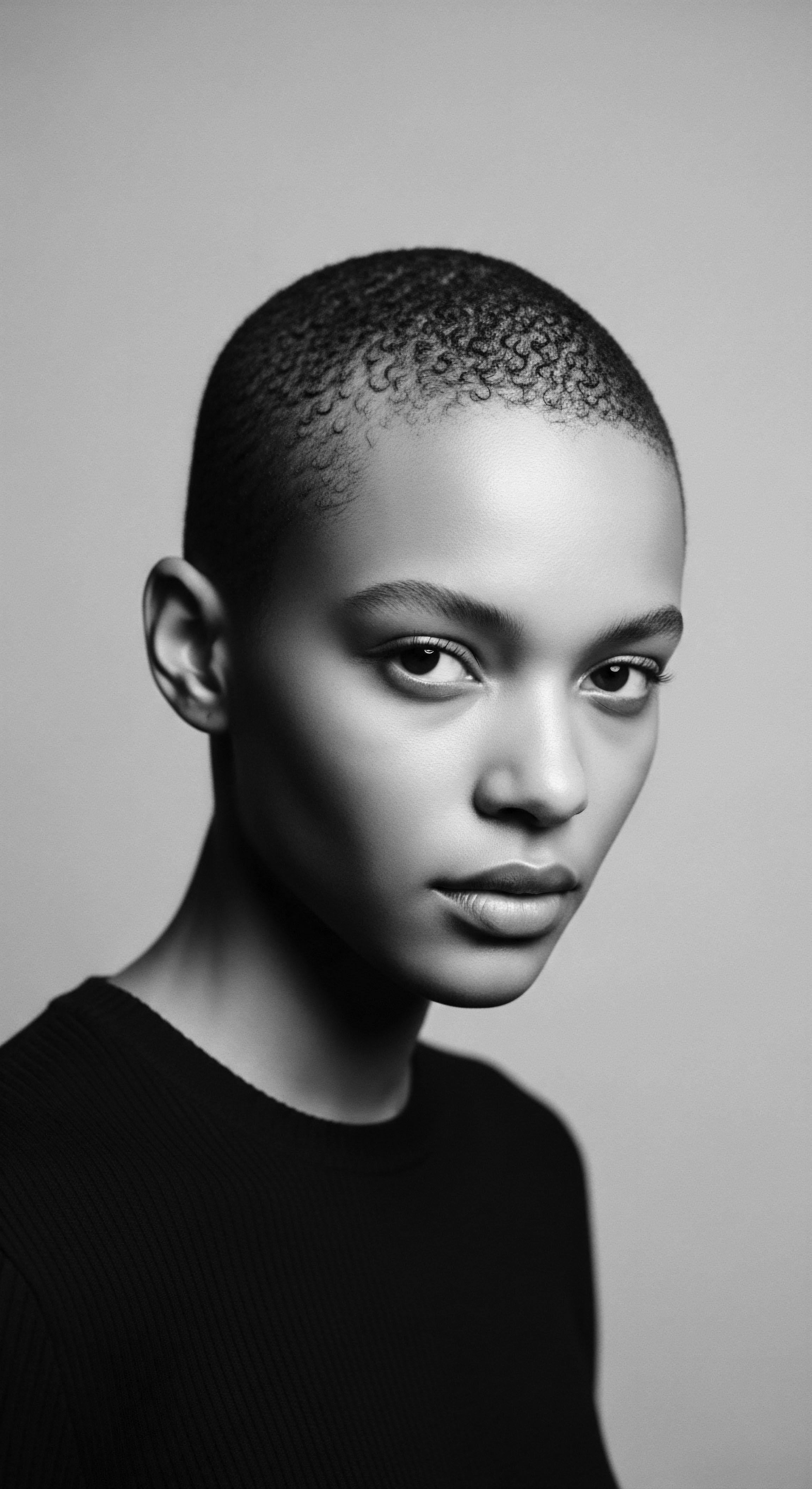
How Do Ancestral Wellness Philosophies Inform Modern Coil Care?
The traditional African approach to hair care was rarely isolated from overall health. It was a component of a larger philosophy that viewed the body, spirit, and environment as interconnected. This holistic perspective meant that remedies for hair dryness were often tied to internal wellness and environmental adaptation. For instance, the understanding that natural oils from the scalp have difficulty traversing the unique coiled structure of African hair, contributing to dryness, was implicitly recognized and addressed.
This inherent dryness of afro hair makes it susceptible to breakage, making moisture retention a core concern. The ancestral response was to supplement this natural oil distribution with external emollients derived from the rich African flora.
Consider the emphasis on scalp health. Traditional remedies like Rhassoul clay from Morocco were used to cleanse the scalp and hair without stripping it of its natural oils, preserving its delicate balance. Karkar oil, a blend primarily used in Chad and Sudan, has documented antifungal and antibacterial properties, helping to maintain a healthy scalp and addressing issues like dandruff and flakiness.
A healthy scalp creates a fertile ground for healthy hair, a principle well understood by ancestral practitioners. This integrated view, where the scalp and hair are treated as a unified system, is a direct echo of holistic African wellness philosophies.
The enduring wisdom of African hair practices reveals that moisturizing coils involves more than just external application; it is a holistic engagement with ancestral knowledge, environmental understanding, and inherent hair biology.
The practice of leaving oils and butters in the hair for extended periods, even overnight, mirrors modern deep conditioning treatments. Karkar oil, for instance, can be left in overnight as a deep conditioning treatment or used as a pre-wash treatment, providing intense moisture. This long-duration application allowed the rich nutrients of ingredients like shea butter or baobab oil to deeply penetrate the hair shaft, restoring moisture and elasticity. This deep penetration, a scientific concept understood intuitively, is crucial for effectively moisturizing coils, particularly for high porosity hair where moisture retention is a challenge.
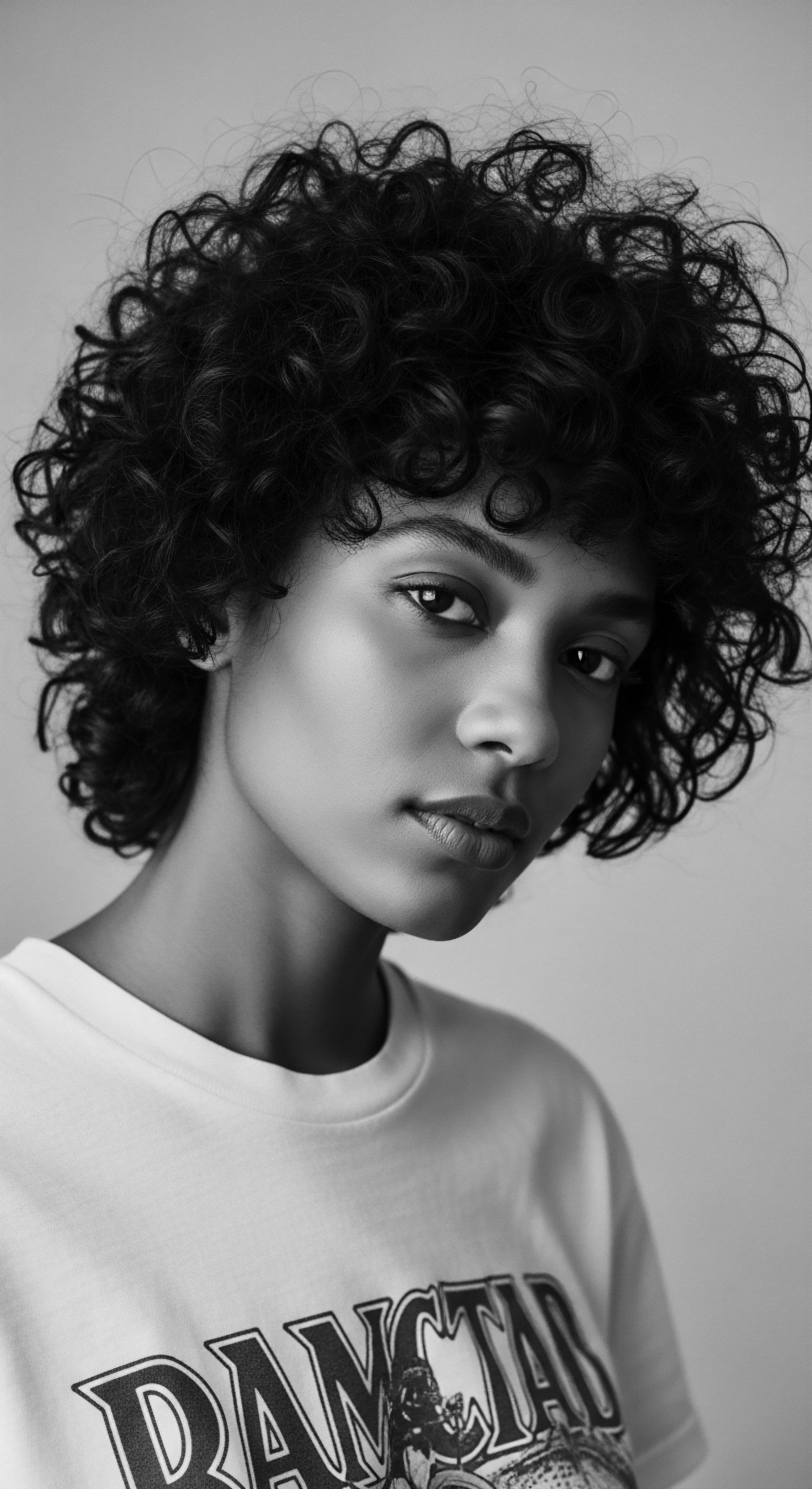
The Nighttime Sanctuary ❉ Bonnet Wisdom and Protective Sleep
The significance of nighttime hair care, particularly the use of bonnets and head wraps, finds deep roots in traditional African practices. While modern science points to satin bonnets and pillowcases reducing friction and moisture loss during sleep, the ancestral use of pieces of clothing as headscarves served a similar purpose ❉ protecting hair and retaining its moisture. This foresight in protecting hair during periods of rest or inactivity highlights a proactive approach to moisture preservation that predates laboratory research.
This practice safeguards against mechanical damage, friction from bedding, and ambient dryness, which are all factors that can strip coils of their moisture. The tradition of covering hair, whether for daily protection from dust and sun or for ceremonial purposes, evolved into a practical method of hair preservation, allowing oils and butters to remain on the hair for longer, continuing their moisturizing work. It speaks to a subtle, yet potent, understanding of how constant environmental exposure can compromise hair health, especially for vulnerable coiled textures.
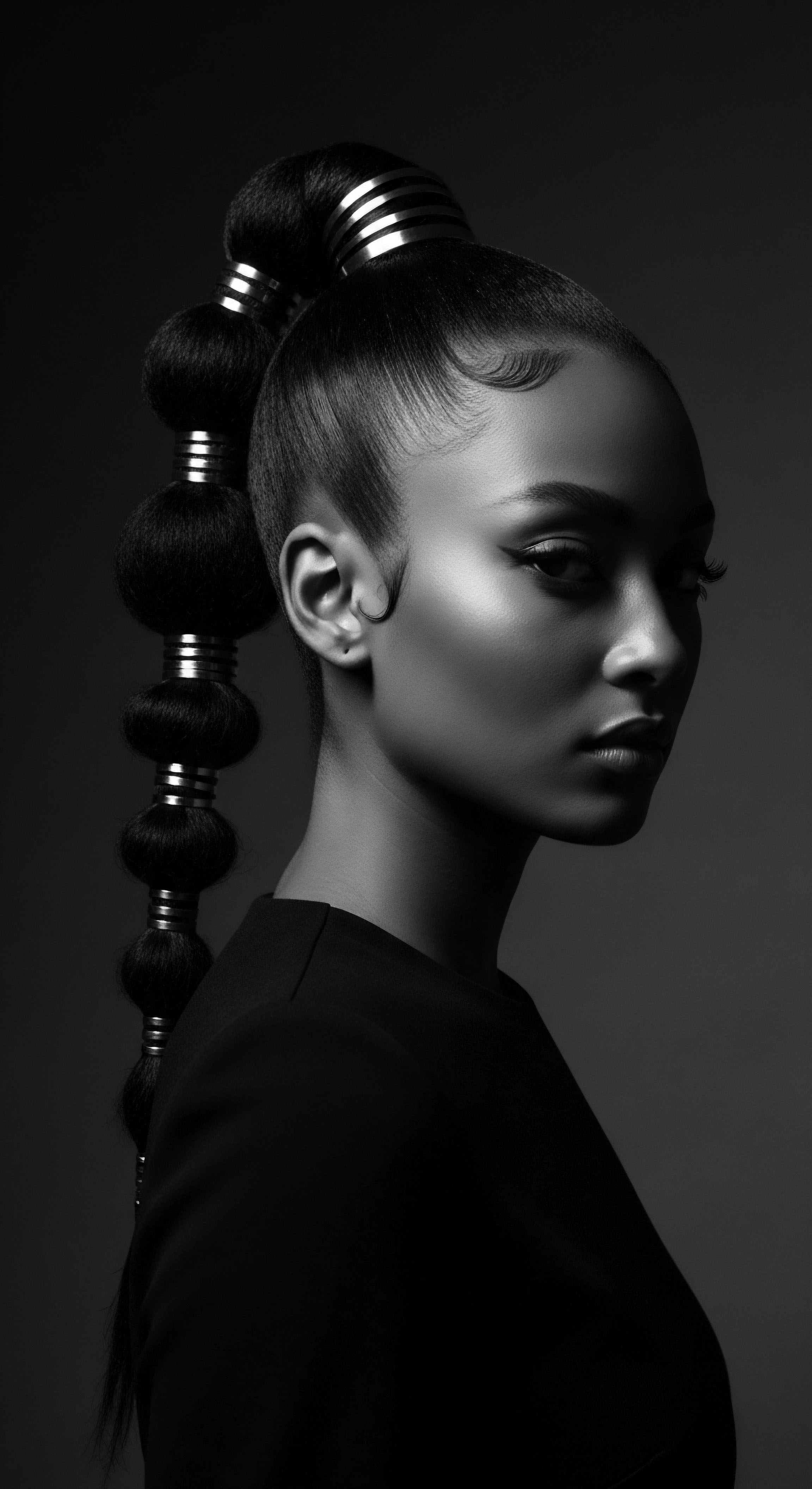
Deep Dives ❉ Traditional Ingredients Meet Modern Understanding
Many traditional African ingredients, once dismissed in mainstream beauty, are now celebrated for their scientifically validated properties. The wisdom of the past, now amplified by modern research, offers compelling evidence for their efficacy in moisturizing coils.
- Shea Butter ❉ Its rich composition includes oleic, stearic, linoleic, and palmitic acids, which are fatty acids known for their emollient properties, helping to seal in moisture and soften hair. It is also abundant in vitamins A, E, and F, acting as antioxidants and providing some UV protection.
- Chebe Powder ❉ While not a moisturizer in itself, its unique method of application (coating hair with an oil-mixed paste and then braiding) helps to seal in hydration and prevent mechanical breakage, which is a key barrier to length retention for coily hair. The components, such as lavender croton and cloves, work to strengthen the hair shaft, reducing split ends and improving elasticity.
- Karkar Oil ❉ This traditional Sudanese blend, primarily sesame oil, is rich in vitamins E and B and essential fatty acids, enabling deep penetration into the hair shaft for intense moisture. Honey wax acts as a humectant, drawing moisture from the environment, while animal fat provides a dense source of hydration to repair damaged hair.
- Baobab Oil ❉ Packed with omega-3, -6, and -9 fatty acids, along with vitamins A, D, and E, baobab oil penetrates the hair shaft to lock in moisture and restore elasticity. Its ability to smooth the hair cuticle combats frizz and creates a protective layer, maintaining hydration.
The continuity of these practices, from grandmother to grandchild, is not simply a sentimental act; it is a highly effective, empirically tested system for hair care. The enduring health and length of hair, particularly among communities like the Basara women of Chad who practice traditional Chebe methods, stand as a powerful case study for the efficacy of these ancestral techniques. Their hair often grows to significant lengths, sometimes reaching past their waist, due to consistent moisture retention and reduced breakage.
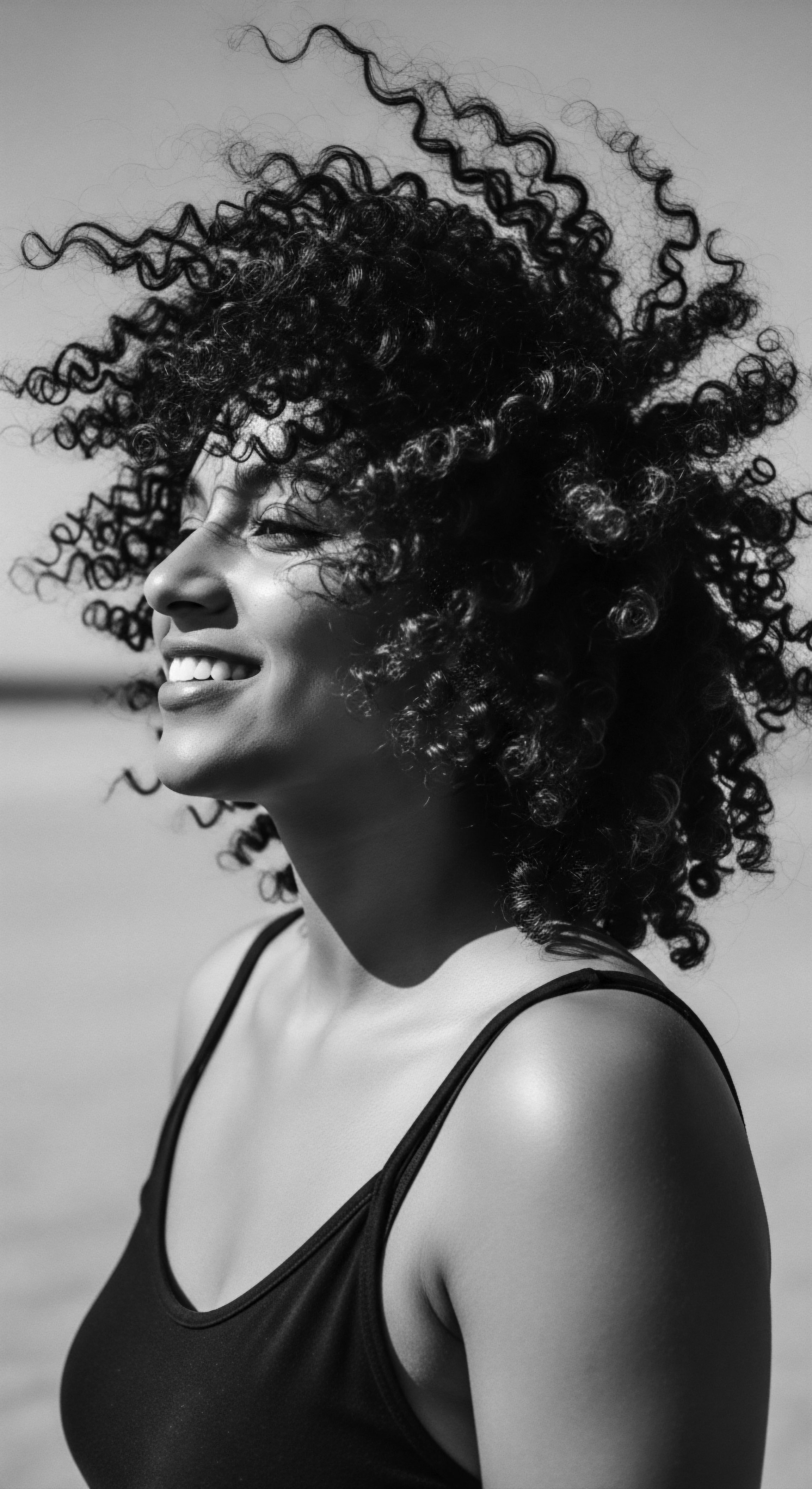
Addressing Challenges ❉ Porosity and Protein-Moisture Balance
Modern science has illuminated challenges unique to coiled hair, such as high porosity. In high porosity hair, the cuticles are more open, causing hair to absorb moisture quickly but lose it just as fast. Traditional practices, through their consistent application of occlusive oils and butters, intuitively addressed this by creating a lasting barrier against moisture evaporation. The “LOC” method (Liquid, Oil, Cream), a popular contemporary moisturizing technique, directly echoes these ancestral layering practices, where a liquid (water or water-based product) hydrates, an oil seals, and a cream provides an additional layer of protection and conditioning.
Moreover, a 2020 study by the International Journal of Trichology found that 65% of African American women with high porosity hair often exhibited an imbalance, having excess moisture without adequate protein support. While traditional practices focused on moisture and protection, a contemporary understanding might suggest incorporating protein treatments derived from natural sources, if not directly from ancestral methods, then as a complementary approach to bolster hair strength alongside moisture retention.
The relay of knowledge, from the ancient communal wisdom of hair care to the precise measurements of modern science, creates a rich and compelling narrative. It demonstrates that the practices developed by African ancestors were not arbitrary, but rather sophisticated responses to the inherent needs of coiled hair, principles that continue to guide us towards healthy, vibrant coils.

Reflection
As we contemplate the rich lineage of traditional African hair practices that moisturize coils, we recognize a profound truth ❉ the wisdom of our ancestors, woven into the very fabric of our hair heritage, offers a timeless blueprint for care. Each strand carries not just a genetic code, but also a collective memory of resilience, beauty, and intimate connection to the earth’s bounty. The journey through these practices, from the elemental understanding of the hair’s structure to the intricate rituals of application, speaks to a heritage that is both deeply personal and universally resonant.
The enduring power of shea butter, the protective embrace of Chebe powder, and the nourishing depth of Karkar and Baobab oils are more than historical footnotes; they are living testaments to an ingenuity born of necessity and a profound respect for natural cycles. These practices are not static relics of the past; they continue to adapt, inform, and inspire, bridging generations and continents. The very act of caring for coiled hair using these ancestral methods becomes a ritual of affirmation, a dialogue with those who came before, and a celebration of self. It is a quiet rebellion against narratives that sought to diminish the inherent beauty of textured hair, a conscious choice to honor a legacy of strength and grace.
The Soul of a Strand, then, is truly a living, breathing archive. It is found in the rhythmic parting of hair, the gentle touch of oil, the patient braiding that defies breakage, and the quiet reverence for earth-given ingredients. This heritage reminds us that true radiance stems not from fleeting trends, but from a deep, abiding connection to our roots. It teaches us that moisturizing coils is an act of reclamation, a continuation of a beautiful narrative that began millennia ago, and one that continues to unfold, vibrant and unbound, into the future.
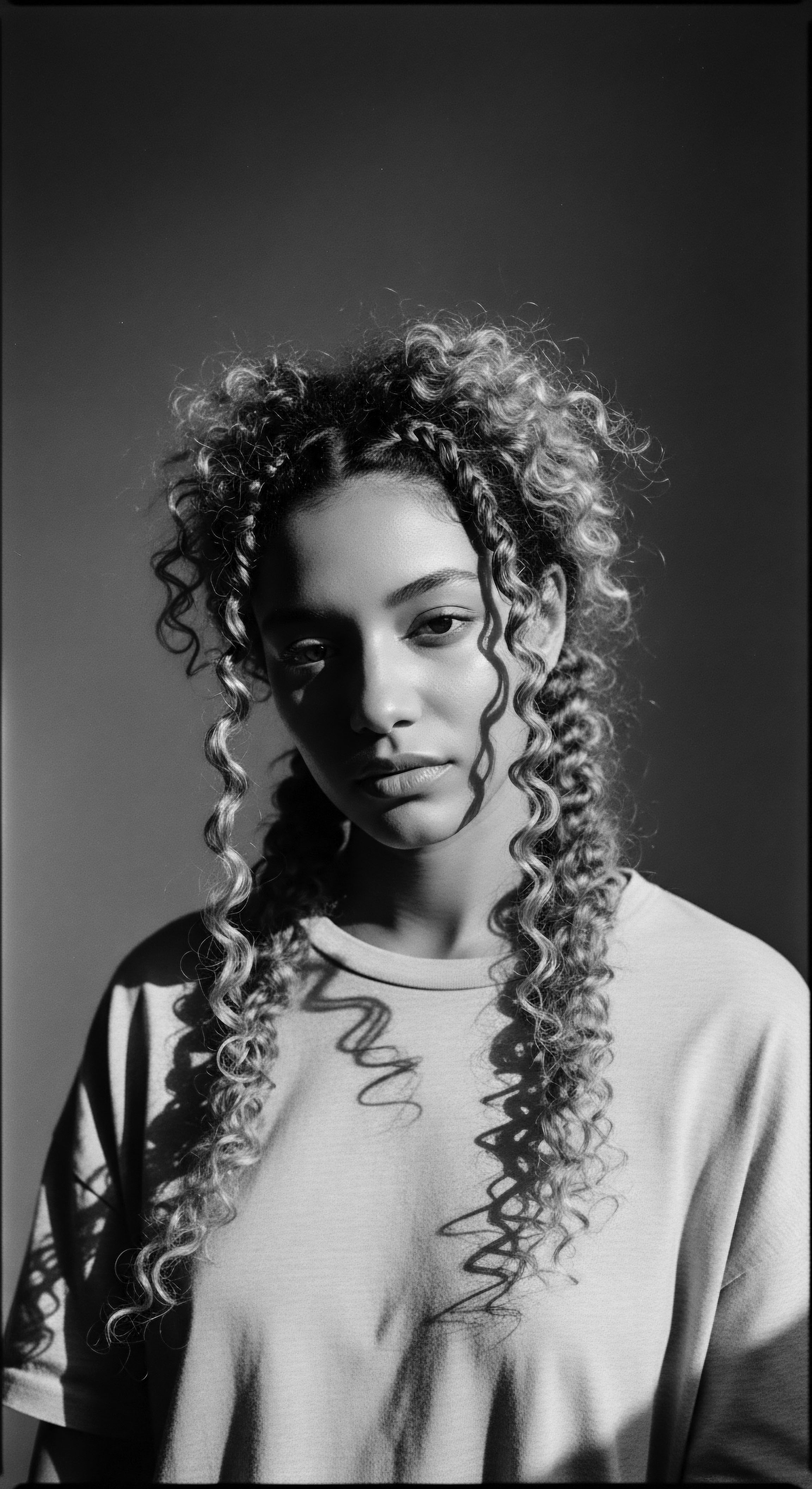
References
- Akanmori, E. (2015). The grooming of hair and hairstyling as a socio-cultural practice and identity .
- Asbeck, S. Riley-Prescott, C. Glaser, E. & Tosti, A. (2022). Afro-Ethnic Hairstyling Trends, Risks, and Recommendations. Cosmetics, 9(1), 17.
- Byrd, A. D. & Tharps, L. L. (2002). Hair Story ❉ Untangling the Roots of Black Hair in America. St. Martin’s Press.
- Essel, S. (2023). Hair styling and the significance attached to this practice in African traditional culture .
- Johnson, A. et al. (2020). Genetic factors influencing hair texture and porosity in African American women. University of California, Los Angeles study.
- Partee, J. (2019). The term ‘porosity’ in relation to hair care began gaining traction in the scientific community in the 1940s and 1950s. However, it wasn’t until the natural hair movement that this concept became widely discussed among consumers .
- Rucker-Wright, S. (n.d.). Survey of scalp disorders and hair care practices among African American girls .
- Walker, S. (2007). Style and Status ❉ Selling Beauty to African American Women, 1920-1975. University of North Carolina Press.
